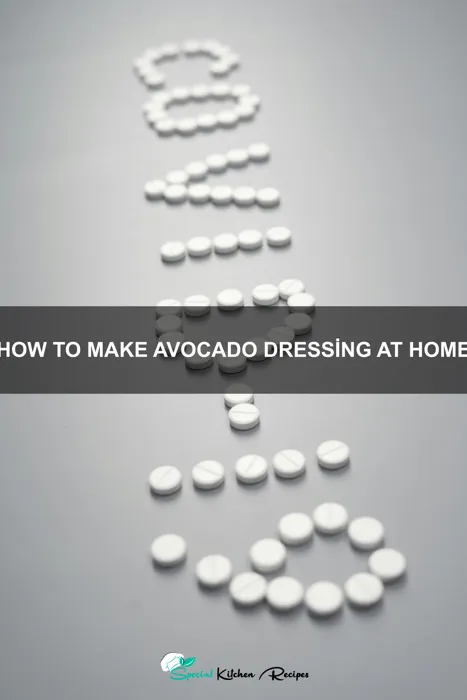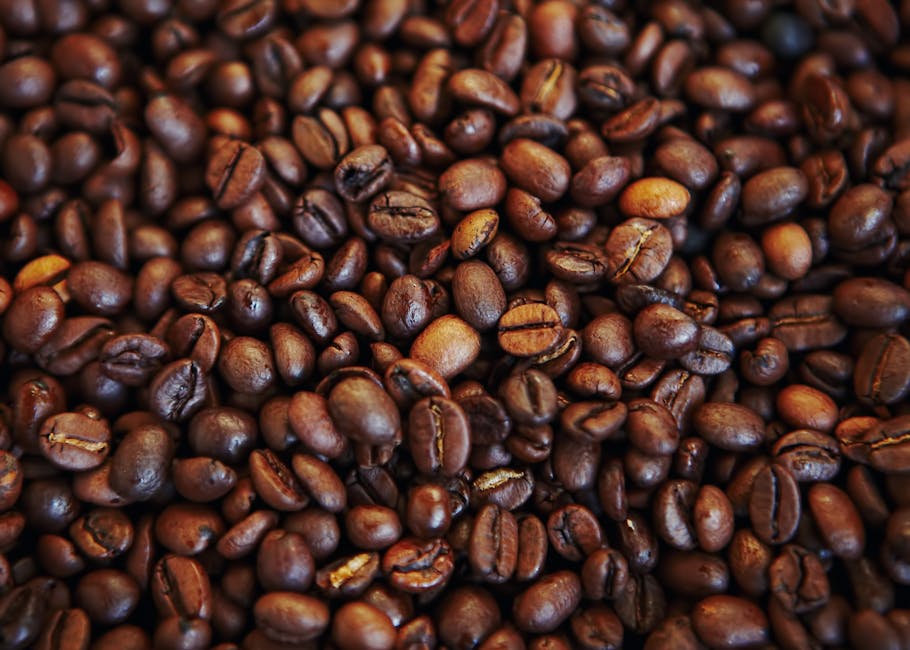Avocado, a fruit botanically classified as a single-seeded berry, has a rich and fascinating history intertwined with culinary traditions across the globe. Originating in Central Mexico, avocados have been cultivated for thousands of years, with evidence suggesting their domestication dating back at least 10,000 years. Ancient Aztec civilizations revered the avocado, referring to it as ahuacatl, a word that also meant testicle due to its shape, a fact that contributed to some early hesitancy in its adoption by European cultures. Its creamy texture and unique flavor profile, however, eventually won over palates worldwide.
The journey of the avocado from its Mesoamerican origins to global popularity is a testament to its versatility. Spanish conquistadors introduced the fruit to Europe in the 16th century, though its widespread adoption was slow initially. The 20th and 21st centuries witnessed an explosion in avocado consumption, particularly in North America and Europe, fueled by increased global trade and rising awareness of its nutritional benefits. Today, Mexico remains the world’s leading producer of avocados, accounting for a significant portion of global exports, with the United States being the largest importer. In 2022, the global avocado market was valued at over $16 billion USD, showcasing the fruit’s continued economic and cultural importance.
Beyond its commercial success, the avocado holds a special place in various cultures. From guacamole, a cornerstone of Mexican cuisine, to its use in salads, sandwiches, and even desserts, the avocado’s adaptability is unparalleled. Its creamy texture lends itself beautifully to dressings, offering a rich and healthy alternative to traditional oil-based vinaigrettes. In this recipe, we’ll explore the simple yet rewarding process of crafting your own homemade avocado dressing, a culinary adventure that combines the ancient history of this remarkable fruit with the modern pursuit of fresh, flavorful, and healthy eating. This dressing is not only delicious but also packed with healthy fats, fiber, and essential nutrients.
Ingredients and Measurements
Creating a delicious avocado dressing hinges on using fresh, high-quality ingredients and precise measurements. The following recipe yields approximately 1 cup of dressing, perfect for a large salad or several smaller servings. Feel free to adjust quantities based on your needs, but maintaining the ratios is key to achieving the desired creamy texture and balanced flavor.
Avocados: You’ll need two ripe but firm avocados. Ripe avocados will yield a creamier dressing, but avoid overly ripe ones as they can become bitter and overly soft, making blending difficult. The ideal avocado is slightly yielding to gentle pressure. Choosing avocados of similar size ensures consistent texture and flavor in your dressing.
Lime Juice: Freshly squeezed lime juice is essential. Use the juice of one large lime (approximately 2 tablespoons). Bottled lime juice lacks the vibrant acidity and fresh flavor that elevates this dressing. Avoid using lemon juice as a substitute; its sharper flavor profile will alter the overall taste.
Olive Oil: We’ll be using 1/4 cup of extra virgin olive oil. Extra virgin olive oil offers a richer, fruitier flavor compared to other olive oils, enhancing the overall taste of the dressing. The quality of your olive oil directly impacts the final flavor of the dressing, so choose a good quality oil.
Cilantro: Fresh cilantro adds a bright, herbaceous note that complements the richness of the avocado. Use 1/4 cup of packed fresh cilantro leaves, roughly chopped. If you don’t like cilantro, you can substitute with a similar amount of parsley or even omit it entirely. However, cilantro is highly recommended!
Garlic: A small amount of garlic adds a subtle savory depth. Use one small clove of garlic, minced finely. Too much garlic can overpower the delicate avocado flavor. If using a garlic press, be mindful not to over-press, as this can result in a bitter taste.
Salt and Pepper: Seasoning is crucial! Add 1/2 teaspoon of sea salt and 1/4 teaspoon of freshly ground black pepper. Taste and adjust according to your preference. Start with a smaller amount and gradually add more until you achieve the desired level of saltiness.
Optional additions: For a spicier kick, add a pinch of cayenne pepper or a few drops of your favorite hot sauce. A dash of water can help thin the dressing if it’s too thick. A tablespoon of sour cream or Greek yogurt can add extra creaminess.
Equipment List
Making a delicious avocado dressing at home requires minimal equipment, but the right tools can significantly improve the process and the final result. This list details the necessary equipment, along with some helpful recommendations for achieving the best texture and consistency.
1. Food Processor or Blender: This is arguably the most crucial piece of equipment. A food processor offers superior control over texture, especially if you prefer a chunkier dressing. A high-powered blender will work equally well, especially if you want a completely smooth and creamy consistency. Choose a model with a large capacity (at least 4 cups) to easily accommodate all ingredients without overcrowding. Overcrowding can lead to uneven processing and a less emulsified dressing.
2. Measuring Cups and Spoons: Accurate measurements are key to achieving the desired flavour balance and consistency. Invest in a set of reliable measuring cups and spoons – preferably both dry and liquid measuring cups – to ensure precision. Use standard measuring cups and spoons (metric or imperial) to easily replicate the recipe. Avoid using casual kitchen utensils for accurate measurements.
3. Mixing Bowl (Medium): While a food processor or blender does most of the work, a medium-sized mixing bowl is still essential. You’ll need it for pre-measuring ingredients, combining elements that aren’t processed, or for holding the finished dressing before serving. Choose a bowl made of a non-reactive material like stainless steel or glass to avoid any unwanted chemical reactions with the ingredients. Avoid using reactive materials like aluminum or reactive plastics.
4. Spatula or Scraper: A rubber spatula or bench scraper is incredibly helpful for ensuring all ingredients are thoroughly incorporated in the food processor or blender. This is especially useful for scraping down the sides of the bowl, preventing ingredients from sticking and ensuring a smooth and consistent final product. This step is crucial to prevent ingredients from being left unprocessed.
5. Fine-Mesh Sieve (Optional): If you prefer a completely smooth and lump-free dressing, a fine-mesh sieve can be used to strain the dressing after processing to remove any small pieces of avocado or other ingredients. This step is optional, but it can enhance the overall texture if you prefer a silky-smooth dressing. A regular sieve may not be fine enough to remove small avocado particles.
6. Airtight Container: Once your dressing is complete, store it in an airtight container in the refrigerator. Glass or BPA-free plastic containers are recommended for optimal storage and preservation. Proper storage will help to maintain the freshness and quality of your avocado dressing.
Preparation of Avocado
The quality of your avocado significantly impacts the texture and flavor of your dressing. Choose avocados that are ripe but firm to the touch. Avoid avocados that are overly soft or have blemishes, as these can affect the creamy consistency of your dressing.
For a standard batch of avocado dressing (approximately 1 cup), you’ll need one medium-sized ripe avocado. The size can vary, so adjust accordingly if using larger or smaller avocados. A good rule of thumb is to aim for an avocado weighing around 200-250 grams.
Begin by washing the avocado thoroughly under cold running water. Scrub gently to remove any dirt or debris from the skin. This is a crucial step for food safety, ensuring your dressing is free from contaminants.
Next, cut the avocado in half lengthwise, following the natural seam. Use a sharp knife to ensure a clean cut. Twist the two halves gently in opposite directions to separate them. You’ll find a large pit nestled in the center of each half.
Carefully remove the pit using a spoon or a special avocado pit remover. Avoid cutting into the flesh of the avocado with the knife, as this can cause browning and affect the overall appearance and taste of your dressing. Simply use the edge of the spoon to gently dislodge the pit.
Now, it’s time to scoop out the avocado flesh. You can use a spoon to scoop out the avocado flesh directly into your mixing bowl. Work quickly to minimize browning. If you anticipate some delay before blending, consider lightly spraying the exposed avocado flesh with lemon juice or lime juice to help prevent oxidation and browning. This will help preserve the vibrant green color and fresh flavor of your avocado.
Once all the avocado flesh has been removed, you are ready to proceed with the next step of your avocado dressing recipe. Remember to measure your avocado flesh to ensure the right consistency for your dressing. If using a food processor, you may find it helpful to add a tablespoon or two of your chosen liquid (water, lime juice, etc.) to help the blades blend the avocado more smoothly.
Proper avocado preparation is key to a delicious and visually appealing avocado dressing. Taking your time to carefully select, wash, and handle your avocado will result in a superior final product.
Combining Ingredients
This section details the crucial step of bringing together all your prepared ingredients to create a smooth and delicious avocado dressing. The order in which you combine ingredients can impact the final texture and consistency, so following these steps is important for optimal results.
Begin by adding one ripe avocado to a food processor or blender. Ensure your avocado is ripe but not overripe; overripe avocados can result in a watery or overly bitter dressing. A perfectly ripe avocado will yield a creamy, vibrant green dressing.
Next, add 1/4 cup of fresh lime juice. Lime juice is essential not only for its bright, zesty flavor but also for its ability to prevent the avocado from browning. The acidity helps preserve the avocado’s vibrant green color and prevents enzymatic browning which can lead to discoloration and an off-flavor.
Now, incorporate 1/4 cup of water. This helps to thin the dressing to your desired consistency. Start with 1/4 cup and add more, one tablespoon at a time, until you achieve your preferred thickness. Too much water will result in a runny dressing, while too little will create a thick paste.
Add 2 tablespoons of extra virgin olive oil. High-quality olive oil significantly contributes to the overall flavor profile of the dressing. A good quality olive oil provides a rich, fruity flavor that complements the avocado beautifully. You can adjust this amount based on your preference for a richer or lighter dressing.
Finally, add 1/2 teaspoon of salt and 1/4 teaspoon of freshly ground black pepper. Seasoning is key to balancing the flavors. Taste the dressing and adjust the salt and pepper according to your preference. You may also wish to add other seasonings such as garlic powder, onion powder, or a pinch of red pepper flakes for a spicier kick.
Once all the ingredients are in the food processor or blender, blend until completely smooth and creamy. Scrape down the sides of the bowl as needed to ensure everything is thoroughly combined. If using a blender, blend in short bursts to avoid overheating the motor.
Taste and adjust seasonings as needed. This is your chance to personalize the dressing to your taste. Some people prefer a tangier dressing and may add more lime juice, while others may prefer a more subtle flavor. Adjust the salt, pepper, and other seasonings until you’re happy with the flavor profile.
Once you’ve achieved your desired consistency and flavor, your homemade avocado dressing is ready to be used! Enjoy!
Emulsification Techniques (if applicable)
Making a creamy, stable avocado dressing relies heavily on proper emulsification. This is the process of combining oil and water (in this case, the avocado’s natural water content and the added liquid) into a smooth, homogenous mixture. Since avocado is naturally creamy, the emulsification process isn’t as demanding as, say, making a vinaigrette, but understanding the techniques will improve the texture and longevity of your dressing.
The simplest method, and often the most effective for avocado dressing, is immersion blending. Start by combining 1 ripe avocado (about 200g), 1/4 cup (60ml) of lime juice, 2 tablespoons (30ml) of water, 1 tablespoon (15ml) of olive oil, and a pinch of salt in a blender. Ensure the avocado is ripe but not overly soft, as this can lead to a watery dressing. Blend on high speed until completely smooth and creamy. If the mixture is too thick, add more water, a tablespoon at a time, until you reach your desired consistency. This method creates a very stable emulsion due to the high-speed shearing action of the blender.
Alternatively, you can use a food processor. The process is similar to using a blender, but you might need to stop and scrape down the sides more frequently to ensure everything is fully incorporated. Start with the same ingredients as above and pulse until smooth, scraping down the sides as needed. The food processor may not create as fine an emulsion as a blender, but it’s still a perfectly viable option.
For a completely manual approach, you can try whisking. This requires more effort and patience. In a bowl, mash the avocado with a fork. Then, slowly drizzle in the olive oil while whisking vigorously. Gradually add the lime juice and water while continuing to whisk. This method is less efficient at creating a stable emulsion, and you might find some separation over time. It’s crucial to whisk constantly to prevent oil from separating.
Regardless of the method you choose, remember that the quality of your ingredients matters. Using fresh, ripe avocados and high-quality olive oil will result in a richer, more flavorful dressing. Also, avoid over-processing, as this can lead to a grainy or overly aerated texture. Taste and adjust seasonings as needed after emulsification. Store your homemade avocado dressing in an airtight container in the refrigerator for up to 3 days.
Seasoning and Taste Adjustment
Seasoning is the crucial final step in creating a truly delicious avocado dressing. The delicate flavor of avocado can be easily overwhelmed, or conversely, left bland without proper attention to this stage. Start with a base of salt and freshly ground black pepper. I recommend beginning with 1/2 teaspoon of fine sea salt and 1/4 teaspoon of freshly ground black pepper per cup of avocado base. Taste the dressing carefully after adding these; this will be your benchmark for further adjustments.
Acidity is key to balancing the richness of the avocado. Lime juice is a classic choice, offering a bright, citrusy note that cuts through the creaminess. Start with 2 tablespoons of freshly squeezed lime juice per cup of dressing. Lemon juice can be substituted, but lime offers a more vibrant flavor profile. Taste again and adjust the lime juice to your preference; some may prefer a more tart dressing, while others prefer a milder flavor.
Now it’s time to explore other flavor dimensions. A touch of heat can add complexity and depth. A pinch of cayenne pepper (1/8 to 1/4 teaspoon) or a few dashes of your favorite hot sauce can work wonders. Alternatively, consider adding a small amount of finely minced jalapeño or serrano pepper for a more pronounced heat. Remember to taste frequently and adjust the amount gradually to avoid overpowering the avocado flavor.
For a richer, more savory dressing, consider adding a teaspoon of quality extra virgin olive oil. This will add another layer of flavor and enhance the overall texture. A touch of garlic powder (1/4 teaspoon) or a finely minced clove of garlic can also elevate the savory notes. However, be mindful that garlic can be overpowering, so start with a small amount and add more gradually to taste.
Sweetness can be a subtle but effective addition. A tiny pinch of sugar (1/8 teaspoon) or a drizzle of agave nectar can help to balance the acidity and bring out the best in the avocado. Honey can also be used, but its strong flavor might clash with the delicate avocado. Remember, a little sweetness goes a long way, so add sparingly.
Finally, taste, taste, taste! Continuously taste your dressing throughout the seasoning process. Your palate is the ultimate judge. Adjust the seasonings until you achieve the perfect balance of flavors – the ideal combination of creamy, tangy, and savory that suits your individual taste.
Recommendations
This creamy avocado dressing is incredibly versatile and can elevate a wide range of dishes. For optimal flavor, use ripe but firm avocados to prevent the dressing from becoming overly watery. Experiment with adding a pinch of your favorite spices like cumin, chili powder, or smoked paprika for an extra kick. A squeeze of lime juice at the end brightens the flavor and helps to prevent browning.
Serving Suggestions: This dressing is delicious over salads, especially those featuring greens, tomatoes, cucumbers, and grilled chicken or fish. It also pairs beautifully with roasted vegetables like sweet potatoes or broccoli. Try it as a dip for tortilla chips, vegetables, or even as a spread for sandwiches. A drizzle over tacos or burrito bowls adds a rich, healthy creaminess.
Storage: Store leftover dressing in an airtight container in the refrigerator for up to 3 days. To maintain its vibrant green color and prevent browning, press a piece of plastic wrap directly onto the surface of the dressing before sealing the container. Adding a tablespoon of lemon juice or lime juice can also help prevent oxidation.
Complementary Dishes: This avocado dressing complements a variety of cuisines. It’s fantastic with Mexican-inspired dishes, adding a healthy twist to tacos, burritos, and fajitas. It also pairs well with Mediterranean-style salads and grilled seafood. Consider using it as a sauce for grilled chicken or fish, or as a topping for baked potatoes.
Nutritional Information (per 2 tablespoons): (Note: Nutritional information will vary based on specific ingredients and quantities used. This is an estimate.) Calories: Approximately 150-200; Fat: 15-20g (mostly healthy monounsaturated fats); Protein: 2-3g; Carbohydrates: 5-7g; Fiber: 4-6g. This dressing is a good source of healthy fats, fiber, and vitamins. However, remember to adjust portion sizes to fit your individual dietary needs.





